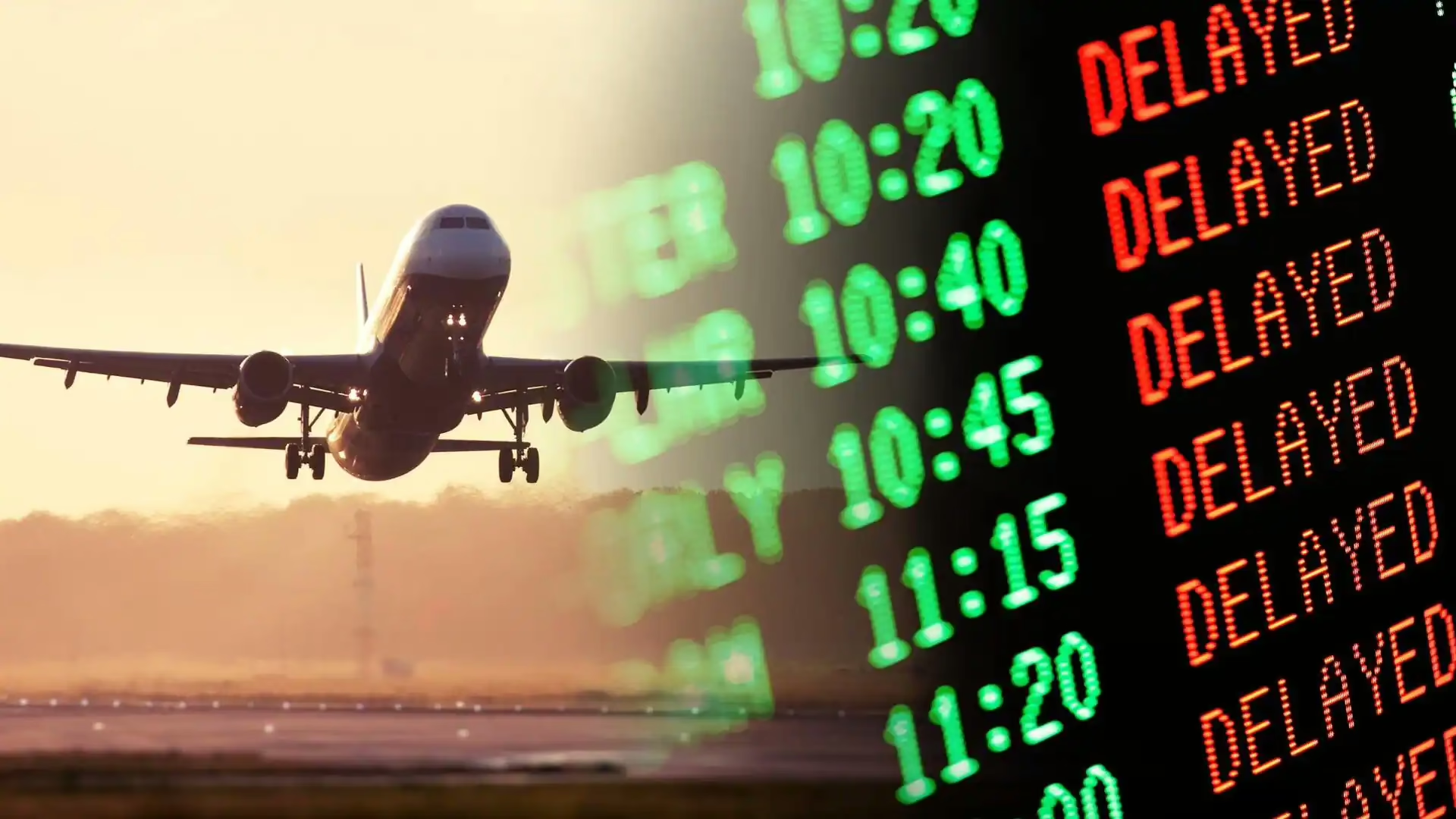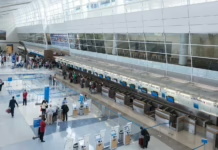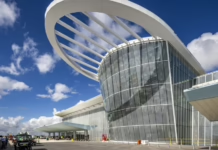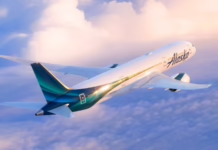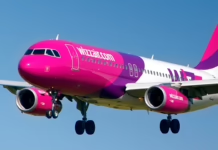Pilots reveal the hidden safety protocols behind aviation’s most frustrating moments—and why every grounded minute could prevent disaster in the air.
The Allegiant Air passengers stranded overnight in Albany, New York, weren’t seeing the bigger picture. From their perspective, the airline had simply failed them—poor planning, inadequate resources, maybe just bad luck. But from the cockpit, their pilots had made the only choice available: ground the aircraft rather than risk lives.
This disconnect between passenger frustration and pilot decision-making reveals aviation’s most misunderstood reality. Those maddening delays and unexpected diversions aren’t signs of system failure—they’re proof the system works exactly as designed.
Understanding why requires stepping into the cockpit, where safety calculations override schedule pressures every single time.
When Safety Trumps Schedules
Aviation operates on an uncompromising principle: safety first, schedules second. This hierarchy drives every decision pilots make, from routine pre-flight checks to emergency diversions that strand hundreds of passengers far from home.
The Allegiant situation in Albany exemplifies this logic. Weather conditions and crew duty regulations left pilots with no legal path forward. The decision to halt operations may have sparked passenger anger, but it prevented far greater risks. In aviation’s risk-management calculus, temporary inconvenience always beats potential catastrophe.
Every minute an aircraft sits idle on the ramp represents this philosophy in action. Pilots think beyond immediate passenger frustration to long-term consequences. A one-hour ground delay might prevent a serious incident during flight. What feels like lost time to travelers represents an additional safety margin to flight crews.
These operational pauses make commercial aviation the world’s safest transportation mode. The mathematics are stark: while delays inconvenience millions annually, this systematic caution keeps fatal accident rates at historically low levels.
The Three Pillars of Flight Disruption
Aviation professionals understand that most delays stem from three non-negotiable factors: crew duty limitations, weather conditions, and maintenance requirements. Each operates independently, but together they form the backbone of aviation safety regulation.
Crew Duty Limits: The Fatigue Factor
Federal regulations strictly govern how long pilots and flight attendants can work before mandatory rest periods. These rules track duty time down to the minute because fatigue-related errors have proven deadly in past accidents.
When crews “time out,” flights cannot legally proceed regardless of proximity to departure. Airlines monitor these hours obsessively because violations carry severe penalties, including license suspension for individual crew members. The rules may seem harsh to passengers, but historical data shows exhausted crews make mistakes that well-rested crews avoid.
In 2022, American Airlines passengers experienced this regulation firsthand when asked to deplane after waiting hours at the gate. The crew had reached their legal duty limit, leaving the airline no choice but to cancel the flight. Passenger frustration was understandable, but breaking federal law would have risked far worse consequences than schedule disruption.
Weather: The Invisible Disruptor
Weather impacts extend far beyond obvious storms at departure airports. Clear skies overhead can mask disruptions hundreds of miles away that affect arrival airports, air traffic routes, or connecting flights.
Thunderstorms, fog, strong winds, and icing conditions can shut down entire airspace sectors. Lightning poses particular risks during ground operations, forcing airlines to halt fueling and baggage loading until electrical activity passes. Crosswinds can exceed aircraft limitations for safe takeoffs and landings, grounding flights until conditions improve.
These meteorological delays often frustrate passengers who see blue skies outside terminal windows. But aviation weather considers the entire flight path, not just local conditions. A storm system over the Midwest can cascade delays across the continental United States, affecting flights that never encounter bad weather directly.
Maintenance: Zero-Tolerance Standards
Aircraft maintenance requirements allow no compromises. When mechanical issues arise, regulations demand resolution or official clearance before departure. Even seemingly minor problems—a faulty cockpit light or non-functioning lavatory—can ground flights for hours.
These strict standards exist because small problems can signal larger issues. A malfunctioning indicator light might suggest electrical system problems that could worsen during flight. Failed hydraulic components require immediate attention because backup systems have limitations. Brake problems demand resolution because landing performance cannot be compromised.
Maintenance-related delays often test passenger patience because the mechanical issue might seem trivial. But aviation regulations recognize that minor malfunctions can escalate into major emergencies without proper attention.
Learning from Aviation’s Past
Today’s strict regulations emerged from hard-learned lessons written in accident reports and tragedy. Crew duty limits exist because fatigue contributed to past crashes where exhausted pilots made preventable errors. Each regulatory change represents lives that could have been saved with better safety protocols.
Modern duty-time tracking systems monitor every working hour because regulators studied accidents where tired crews missed critical details. These rules weren’t created arbitrarily—they reflect systematic analysis of what went wrong when safety protocols were insufficient.
The regulatory framework also recognizes economic pressures on airlines. Every grounded aircraft costs thousands of dollars per hour in lost revenue, crew scheduling complications, and passenger re-accommodation expenses. Despite these financial pressures, safety regulations offer no flexibility for commercial considerations.
Airlines understand that long-term trust and regulatory compliance outweigh short-term profit maximization. The cost of accidents—in human lives, legal liability, and reputational damage—far exceeds any revenue lost to safety-related delays.
The Economics of Safety
Passengers sometimes wonder why airlines don’t simply push through delays to maintain schedules. The mathematics of aviation safety make this impossible, both legally and financially.
Consider crew duty limits: allowing exhausted pilots to continue flying would be like permitting surgeons to operate after 20 hours without sleep. Reaction times deteriorate, judgment becomes impaired, and error rates increase dramatically. Federal Aviation Administration studies confirm that pilot fatigue and rushed departures have contributed to multiple accidents.
Data shows over 40% of U.S. flight delays result from weather or air traffic control issues—factors completely beyond airline control. Despite these operational challenges, commercial aviation maintains extraordinary safety records. Fatal crash probability remains below one in several million flights, making flying statistically safer than driving to the airport.
Airlines absorb significant costs to maintain these safety standards. Delayed flights require crew rescheduling, passenger rebooking, and often overnight accommodations. Gate fees, fuel costs, and air traffic control charges continue accumulating regardless of departure delays. Yet airlines cannot legally circumvent safety regulations to reduce these expenses.
When Delays Feel Unfair
Not every delay follows straightforward logic from a passenger perspective. Weather-related disruptions can create cascading effects across the national airspace system. A thunderstorm over Chicago’s O’Hare Airport can delay flights nationwide as aircraft and crews become malpositioned for subsequent departures.
Last-minute maintenance discoveries add frustration because the timing feels preventable. But aircraft systems are complex, and problems don’t always announce themselves during scheduled inspections. A hydraulic leak discovered during pre-flight checks requires immediate attention, even if it means delaying hundreds of passengers.
Passengers often question why airlines can’t quickly substitute crews or aircraft when problems arise. The reality is both resources have strict limitations. Replacement crews must meet rest requirements and may not be legally available for duty. Spare aircraft exist primarily at major hub airports, not smaller destinations where mechanical problems might occur.
These situations highlight aviation’s tightly regulated environment. Every delay—from crew rest requirements to unexpected maintenance issues—reflects a system designed to minimize risk through systematic caution.
Passenger Strategies for Delay Management
Travelers can take practical steps to handle delays more effectively. Checking flight status before airport departure, monitoring weather at both origin and destination cities, and subscribing to airline notifications provide advance warning of potential disruptions.
Preparation makes delays more manageable. Packing snacks, entertainment, and phone chargers in carry-on bags reduces inconvenience during extended gate waits. Families traveling with children benefit from planning activities that work in airport environments.
Understanding delay causes also reduces stress levels. Passengers who recognize that strict safety rules drive most disruptions often cope better than those who assume airline incompetence. This knowledge doesn’t eliminate frustration, but it provides context for why delays occur and why they’re often unavoidable.
Technology’s Role in Future Operations
Airlines continue investing in advanced systems to reduce some types of delays. Improved weather radar provides earlier storm warnings, enhanced communication networks speed information sharing, and predictive analytics help anticipate maintenance needs.
These technological advances may minimize certain disruptions, but they cannot eliminate delays entirely. Weather remains unpredictable, mechanical components still fail, and human crews require rest regardless of technological sophistication.
The fundamental truth remains unchanged: aviation safety culture prioritizes protection over punctuality. As long as this principle guides industry operations, delays will remain an inevitable part of air travel.
The Ultimate Priority
Flight delays and diversions frustrate passengers, but they represent aviation safety culture working exactly as intended. From crew duty limits to weather holds, from maintenance checks to air traffic restrictions, each delay reflects systematic risk management that has made commercial flying extraordinarily safe.
For travelers, understanding these realities provides perspective during challenging travel days. The pilot who grounds your flight due to approaching storms or the maintenance technician who discovers a hydraulic problem during pre-flight inspection aren’t trying to ruin your plans—they’re protecting your life.
In aviation, arriving late beats not arriving at all. That mathematical certainty, backed by decades of safety data and hard-learned lessons, drives every delay decision made in cockpits and maintenance hangars across America.

Key Takeaways
- Safety drives all delay decisions: Pilots prioritize passenger safety over schedules, with delays serving as proof the aviation safety system works as designed rather than indicating system failure.
- Three primary delay factors: Crew duty limits, weather conditions, and maintenance requirements account for most flight disruptions, with over 40% of U.S. delays caused by weather or air traffic control issues beyond airline control.
- Regulations reflect hard lessons: Current strict duty time and safety rules exist because fatigue and rushed operations contributed to past accidents, making delays a non-negotiable safety measure.
- Economic costs accepted: Airlines absorb significant financial losses from delays but cannot legally circumvent safety regulations, prioritizing long-term trust over short-term profit considerations.



